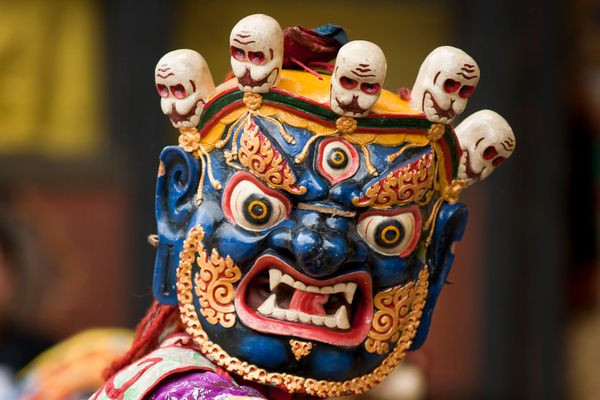Dinosaurs and Damnation: The Horror of Buddhist Hell Temples
Wat Pa Non Sawan (photograph by Chris Backe)
Welcome to Buddhist hell. Between ghastly, oversized concrete statues, and a number of violent scenes, you’ll quickly be asking yourself: “what’s going on here?”
Entering a Buddhist hell temple (also called a hell garden) means entering a dark side of the religion. In short order, you learn that in Buddhism, the punishment fits the crime. If you are caught stealing, you get your hands cut off. Alcoholics are made to drink hot oil, and adulterers are made to climb thorny trees. A rapist has his genitalia cut off or mutilated in some way — and believe me, this is one sight you’ll want to steer your kids away.
Animals also figure in heavily – you might be turned into one, or you might become animal food. At Wat Pa Non Sawan, animals pray on their knees and bow for forgiveness, and some sinners are pecked alive by birds! There’s plenty of symbolism around, far more than a layperson would be able to explain. Wat Pa Non Sawan also features dinosaurs to go with its hellish statues, and is about 25 kilometers outside of Roi Et in eastern Thailand.
Dinosaur at Wat Pa Non Sawan (photograph by Chris Backe)
Hell, to a Buddhist, is a complex sort of state. You might end up in any number of undesirable places based on your sins in this world, but it’s also not a permanent, eternal damnation. How long you’ll be there is dependent on which hell it is, but let’s start by calling it by the right name — naraka. These temples serve as a reminder of naraka, and begin to give you a sense of why Buddhists make merit in this world. Most temples lack English explanations, unfortunately, so it’s best to go with a Thai friend or to get someone to translate the signs for you.
After a Buddhist dies, the mythology states that your name is checked in the “Traibhumi Phra Ruang,” a record of good deeds (like making merit) and bad deeds. You’ll be judged based on those; if you have more good than bad in your ledger, you are reborn into the next life. If you have more bad than good, you’ll go to one of the punishment pits in naraka. Another ancient text, the Abhidharma-kosa (literally, the Treasure House of Higher Knowledge) describes eight ”cold” pits and eight “hot” pits, where your suffering — and its length — grow exponentially based on your deeds. You will eventually be reborn, but that might be billions of years away. You can see some stages of this judgment process at Wat Pa Thewapithak, about eight kilometers north of Roi Et. Keep your eyes out for the Santa suits by the entrance!
Wat Pa Thewapithak (photograph by Chris Backe)
Wat Mae Kaet Noi (photograph by Chris Backe)
The hell temples can be disturbingly gory. Some, like Wat Mae Kaet Noi, seem to take pride in having the most shocking images of all — bloody heads hanging from trees and bodies being mutilated in a number of ways. You may also see children in these hell gardens, as these temples are a perfect way to introduce the fear of Buddha into a kid, in the mind of some Thai parents. If you’re geared up for it, Wat Mae Kaet Noi is in northern Thailand, about 20 kilometers north of Chiang Mai.
These are great places for Buddhists to make merit — essentially, doing good deeds such as donating money to the temple, or offering food to monks. Some Thais believe what you donate has a direct impact on your next life. For example, by offering flashlights or candles, you will have beautiful and bright eyes. Offer up soap or skin lotion, and you will have nice, beautiful skin. Some hell temples feature additional opportunities, such as animatronics that look like they came from the 80s, and start when you insert a coin. It’s all in Thai, but it’s an interesting diversion while at a gruesome sort of place.
Hell temples are a fascinating look into the Buddhist belief system. Without resorting to endless religious texts, they aim to correct wrongdoing in this life, and give visitors a taste of what might happen in the next. In short, you’re reminded of a universal truth: good deeds are rewarded while bad deeds are punished.
Wat Mae Kaet Noi (photograph by Chris Backe)









Follow us on Twitter to get the latest on the world's hidden wonders.
Like us on Facebook to get the latest on the world's hidden wonders.
Follow us on Twitter Like us on Facebook